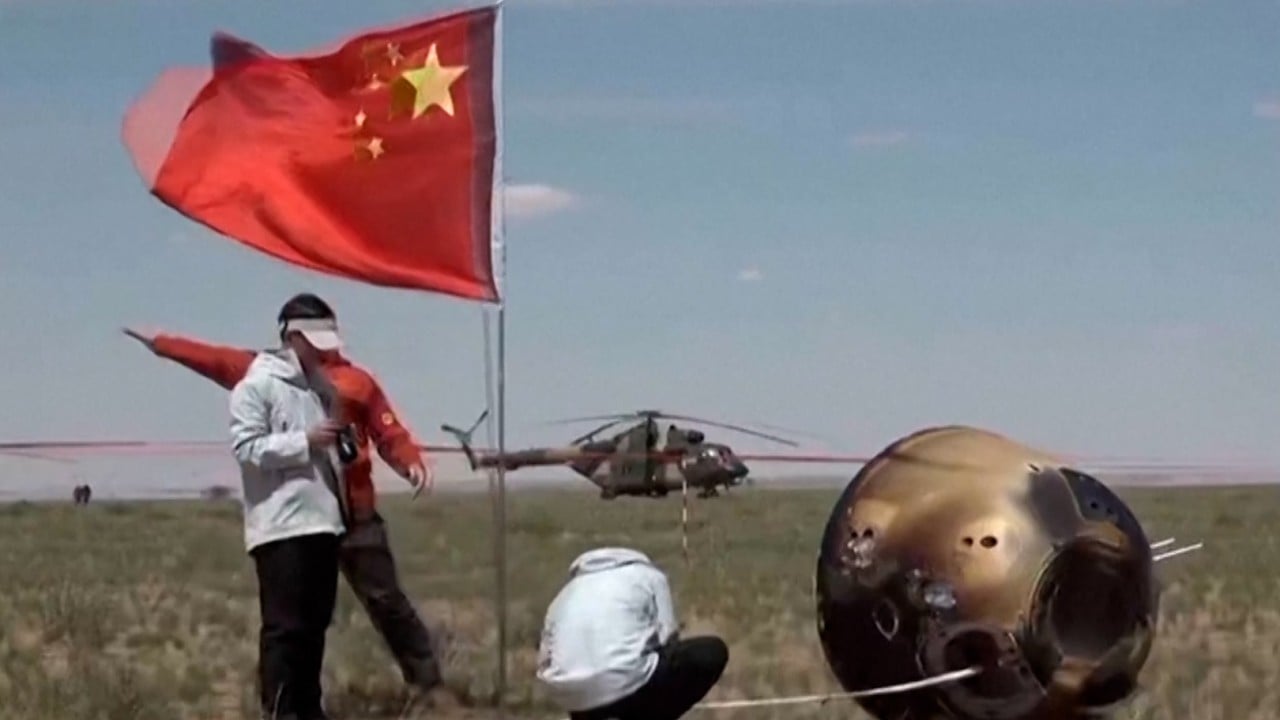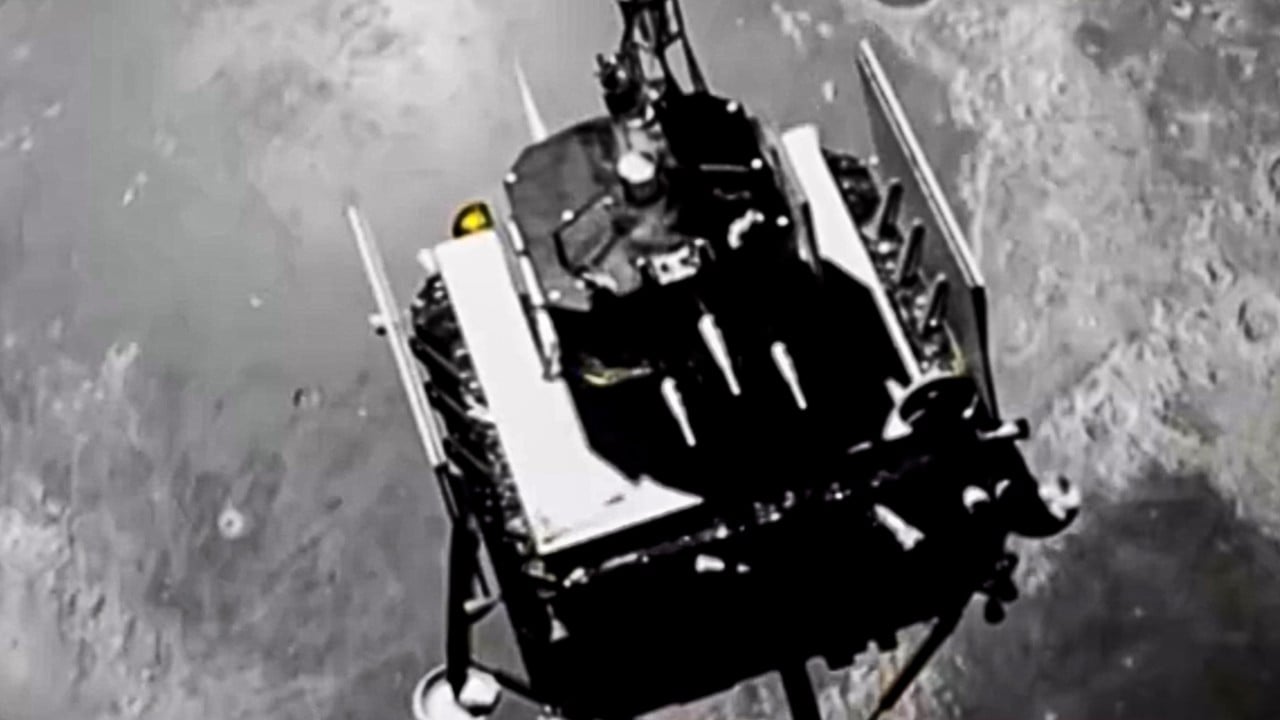Chinese scientists have proposed building a magnetic launcher on the moon to provide a cost-effective way of sending resources extracted from the lunar surface back to Earth.
The magnetic levitation facility would work on the same principle as the hammer throw in athletics but rotating at increasing speeds before throwing the launch capsule towards Earth.
By taking advantage of the moon’s unique environment, such as its high vacuum and low gravity, it would be able to eject payloads twice a day at around 10 per cent of the cost of existing transport methods, according to researchers from the Shanghai Institute of Satellite Engineering.
“The system’s technical readiness is relatively high. Since it consumes only electricity and does not require any propellant, it will be relatively small in scale and straightforward to implement,” the researchers wrote in the journal Aerospace Shanghai.
“The main goal is to extract and return helium-3 to help address Earth’s energy crisis. The project will also boost the development of space mining technologies, heavy launch vehicles, and artificial intelligence.”
Helium-3, which is a light, stable isotope of the more common helium-4, has been hailed as a clean, safe, and efficient fuel that could generate energy through controllable nuclear fusion.
Just 20 tonnes of the material would meet China’s annual electricity needs, according to the paper.
While the Earth only has around 0.5 tonnes of helium-3, there is an estimated 1 million tonnes in the lunar soil – enough to sustain the world’s energy needs for over a thousand years, the paper said.
It did not say how the helium would be extracted and in what form it would return to Earth.
The proposed launch system would use a 50-metre (165ft) rotating arm and a high-temperature superconducting motor to launch capsules loaded with lunar resources.
After 10 minutes, the rotating arm would reach the moon’s escape velocity of 2.4km per second – about one-sixth of Earth’s escape velocity – to put it on the correct trajectory to return to Earth.
The system would be powered by solar and nuclear energy, with more than 70 per cent of the energy recovered after each launch thanks to a design that would allow kinetic energy to be converted back to electricity during the deceleration phase after the launch.
The ultimate goal is to be able to calculate the correct launch angle to within 0.1 degrees to minimise the need for adjustments later in the mission.
The system is designed to last for at least 20 years, but it will weigh around 80 tonnes and will need to wait for China’s super heavy-lift rocket to start operating before it could be taken to the moon.
The team behind the project have suggested that it could form part of a proposed Russian-Chinese joint project to build a research station on the lunar south pole by 2035.
The launch station would cost around 130 billion yuan (US$18.2 billion) to build, but the paper’s co-author Chu Yingzhi told last year’s meeting of the China Association for Science and Technology that mining three to five tonnes of helium-3 a year could bring in revenues of 100 billion yuan.
He also said the main challenges for the launcher project were installing it on the rugged lunar surface, ensuring the rotating arm stayed stable at high speeds and ensuring it could withstand temperature variations, cosmic radiation and lunar dust.
The team aimed to complete the development of key components by 2030, followed by lunar surface verification and full-scale implementation by 2045, he said.




